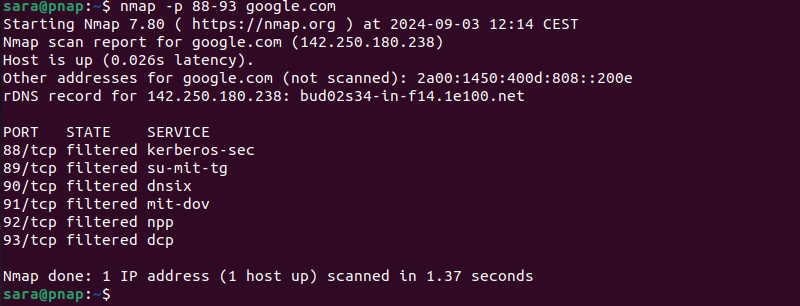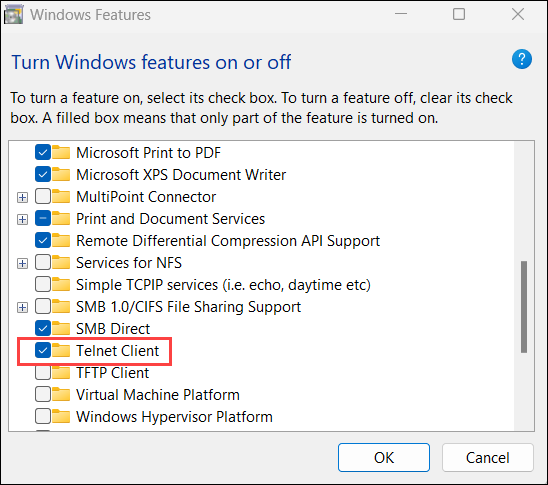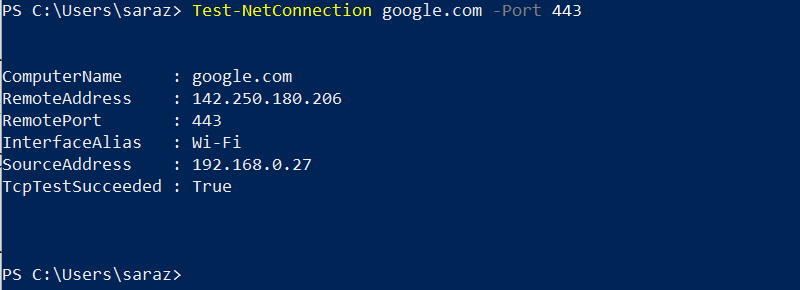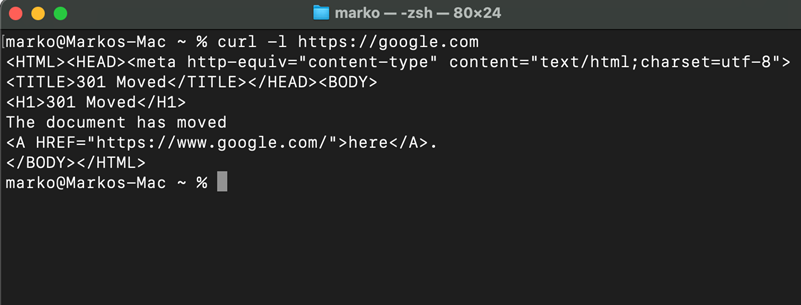The ping command is a network tool for checking whether a certain IP address or host is accessible using a network layer protocol called Internet Control Message Protocol (ICMP).
On the other hand, port numbers belong to transport layer protocols, such as TCP and UDP. Port numbers help identify where an Internet or other network message is forwarded when it arrives.
In this tutorial, you will learn how to ping a port in Windows, Linux, and macOS using different tools.

Prerequisites
Can You Ping a Specific Port?
Network devices use ICMP to send error messages and information on whether communication with an IP address is successful or not. ICMP differs from transport protocols as it is not used to exchange data between systems.
ping uses ICMP packets, and ICMP does not use port numbers, which means a port cannot be pinged. However, there are tools that can check if a port is open.
Some network tools and utilities simulate an attempt to connect to a specific port and wait to see if the target host responds. If there is a response, the target port is open. If not, the target port is closed, or the host cannot accept a connection because there is no service configured to listen for connections on that port.
How to Ping a Specific Port in Linux
There are several tools to check whether a port is open in Linux. They are:
Ping a Port Using Telnet
Telnet is a protocol for interactive communication with the target host via a virtual terminal connection. To ping a port using telnet, run:
telnet [address] [port-number]The [address] is the domain or the host IP address, while [port-number] is the port you want to ping. For example, run the following:
telnet google.com 443
If the port is open, Telnet establishes a connection. Otherwise, it states a failure.
Note:: Learn how Telnet differs from SSH.
Ping a Port Using Netcat
Netcat (nc) reads and writes from connections using TCP and UDP protocols. This command-line tool performs many network operations.
To ping a port using Netcat, enter the following:
nc -vz [address] [port-number]In the command, the -v argument enables detailed output, and -z checks if the port is open without sending data.
For example, run the following;
nc -vz google.com 443
The output states whether the connection to the specified port is successful. If it is successful, the port is open.
Ping a Port Using Nmap
Nmap is a network tool used for vulnerability scanning and network discovery. The utility is also useful for finding open ports and detecting security risks.
Note: Be aware of legal ramifications regarding improper Nmap use, such as flooding a network or crashing a system.
Use the following command to ping a specific port with Nmap:
nmap -p [port-number] [address]The -p option specifies the port or port range you want to scan on the target address. For example, run the following:
nmap -p 443 google.com
The output informs the user about the port's state and service type, latency, and the time elapsed until the task completion.
To ping more than one port, enter:
nmap -p [number-range] [address]The [number-range] is the port number range you want to ping, separated by a hyphen.
For example:
nmap -p 88-93 google.com
Ping a Port Using curl
The curl command is designed to make HTTP/HTTPS requests. However, use curl to check if a specific port is open by attempting an HTTP or HTTPS connection to that port.
The syntax is:
curl [address]:[port-number]For example, to check if port 443 (used for HTTPS) is open on Google using curl, run:
curl https://google.com:443
How to Ping a Specific Port in Windows
Learn how to test the availability of a specific port in Windows using different tools. The following text explains how to ping a specific port in Windows using Telnet and PowerShell.
Ping a Port Using Telnet
Before using Telnet, make sure it is activated. To do that, follow these steps:
1. Open the Control Panel.

2. Click Programs.

3. Select Programs and Features.

4. Select Turn Windows features on or off.

5. Find Telnet Client and check the box. Click OK.

You activated the Telnet Client on the system. After completing the activation, access the cmd and use the following command.
telnet [address] [port-number]The [address] is the domain or the host's IP address, while [port-number] is the port number you want to ping. For example, run:
telnet google.com 443If the connection is successful, you'll see a blank screen or a message indicating the connection is open.
Ping a Port Using PowerShell
PowerShell is a text-based shell that comes with Windows by default. To ping a port using PowerShell, enter the following in the PowerShell prompt window:
Test-NetConnection [address] -p [port-number]For example, run:
Test-NetConnection google.com -p 443
The TCP test is successful if the port is open and the connection is established. Otherwise, a warning message appears saying the TCP connection failed.
How to Ping a Specific Port in macOS
There are several ways to test whether a specific port is open on a remote server using tools available on macOS, such as Netcat, Telnet, and Curl.
Read the following text to learn how to ping a specific port in macOS.
Ping a Port Using nc (Netcat)
To test if a specific port is open, use the following command:
nc -zv [address] [port-number]For example, run:
nc -zv google.com 443
The -z option tells nc to scan for open ports without sending any data. The -v enables verbose mode. Therefore, it provides detailed output.
Ping a Port Using Telnet
The telnet command also checks if a specific port is open. To do it, run the following:
telnet <address> <port_number>For example, run:
telnet google.com 443You'll see a blank screen if the connection is successful.
Ping a Port Using curl
The curl command is helpful for testing HTTP or HTTPS ports (like 80 or 443). The syntax is:
curl -I [address]For example, run the following:
curl -I https://google.com
Conclusion
This article explained several ways to check whether a port is open in Linux, Windows, and macOS. It included instructions for popular tools such as Curl, Nmap, and Netcat.
Next, learn how to open a port in Linux.



